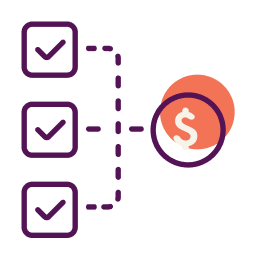Getting approved for a traditional bank loan can be difficult for business owners, especially if you’re running a relatively new startup. Many lenders won’t approve your application if you don’t have a history of being in business for at least two years. Alternative loans, on the other hand, provide business owners with an easier way to get the capital they need to start, maintain, or expand their business, even if it’s brand new or they don’t have great credit.
That said, alternative lending options are typically more expensive than small business lending options from traditional lenders like banks and credit unions. So it’s important to consider all of your options before choosing one.
What is an Alternative Lender?
In the past, small business owners only had the option to get traditional lending products from financial institutions like banks and credit unions. But in this age of technology, there are now non-bank lenders online that provide business funding for entrepreneurs.
Even if you have bad credit, you can find a loan option that works for you. From short-term loans to commercial real estate loans, there are plenty of options to choose from.
How Does Alternative Lending Work?
Alternative financing includes business lenders that exist outside of traditional banks. The different types of alternative loans these lenders provide include short-term business loans, medium-term business loans, lines of credit, invoice financing, equipment financing, merchant cash advances, and more to borrowers. They don’t include bank loans, though some alternative lenders may offer SBA loans.
Many of these types of alternative lending are also available with traditional business lenders. However, alternative lenders typically have lower approval requirements on their loan applications, including less time in business, lower annual revenue requirements, and lower personal or business credit scores (or no credit requirement at all).
The top alternative lenders are typically online companies that can afford to make capital more accessible to business owners who present more risk in not paying back a loan because they don’t have the high costs of running brick-and-mortar branches like traditional banks.
Advantages of Alternative Lending
Advantages of Alternative Lending
There have never been more alternative options to traditional financing than there are right now. In the same way that technology has changed the way we buy an airline ticket, rent a hotel room, hail a cab, and even buy a home, technology is changing the way people get business financing. That being said, it’s not just the technology, but the paradigm shift in the way many lenders look at creditworthiness and the loan underwriting process that is making a difference in who can get small business loans and who can’t.
Some of the advantages to alternative funding include:
- Many borrowers that would have been disqualified before can successfully qualify for a loan now because lenders have access to more information than a business owner’s personal credit score to make a decision.
- Unlike traditional lenders, many alternative lenders don’t require specific collateral to secure a loan, making access to borrowed capital a reality for many business owners that didn’t have assets the bank would accept as collateral.
- Data and technology make loan decisions much easier than a traditional underwriting process and provide fast funding—meaning loan decisions can be made in terms of hours or days rather than weeks or months.
- The application will likely be a simple online form of a page or less to get started.
Disadvantages of Alternative Lending
Thanks to these alternatives to the bank, there are more financing options available today for small business than ever before. Yet, small business owners need to be better informed and more savvy as they approach some of the different options. Nevertheless, there are millions of small businesses every year that benefit from what these alternative lenders offer, but here are some things to make sure you consider when choosing an alternative to the bank:
- Interest rates will likely be higher. Depending on your personal and business credit profile, there is a wide range of costs associated with a small business loan. A less-than-perfect credit profile might not mean you can’t get financing, but it will likely mean the cost of financing will be higher and you should prepare of that.
- Loan terms will likely be shorter. Many alternative lenders offer terms of a year or less, which some borrowers might consider a disadvantage. I recommend matching the loan term to the loan purpose in much the same way most of us would never buy a new car with a 30-year auto loan.
- Payments will be more frequent—and automatic. Most alternative lenders will expect a daily or weekly direct debit from your business checking account. What’s more, the first debit could take place on the first business day after your loan closes, which will be different for many small business owners used to a traditional monthly payment.
When you evaluate whether or not an alternative loan is a good option for your business, understanding the differences from traditional financing before you sign on the dotted line will be important.
Let’s look at some of the types of loans you have available from alternative lenders.
ForwardLine
One short-term loan option comes from ForwardLine, which provides loans of $5,000 to $150,000 within 24 hours.
If you qualify, you’ll pay a 1.15-1.38 factor rate, as well as a 2.5% origination fee. Payments are taken out daily or weekly for 12-15 months.
To qualify, you must:
- Have been in business for at least one year
- Have no open bankruptcies, discharges, or dismissals for one year
BlueVine
BlueVine offers two different types of alternative loan products: lines of credit and invoice factoring.
With the lender’s line of credit, you can borrow up to $250,000, which you’ll pay back in automatic weekly payments from your business checking account over six or 12 months.
Interest rates can go as low as 4.8%, though that’s calculated as a simple interest rate based on repayment over 26 weeks. The actual APR can range from 15% to 78%. Note that there’s a $15 bank wire fee if you choose to receive your line of credit draws that way. If you opt for ACH transfers, however, those are free.
To qualify for a line of credit or term loan from BlueVine, you’ll need:
- At least six months in business
- $10,000 or more in monthly revenue
- A FICO credit score of 600 or higher
With invoice factoring, BlueVine purchases your invoices from you, giving you roughly 85% to 90% of the invoice amount as an advance. Your customers will then pay you through an account in your name that’s held by BlueVine. In other words, it’s not a loan, and BlueVine technically holds ownership of the funds once you sell them the invoice.
Once you’re paid, BlueVine will take back the advance and disburse the rest to you minus their fees, which are set at 1% per week with a three-week minimum.
One thing to note is that invoice factoring is not the same as invoice financing, which is a loan advance with an interest rate and fees. The main difference between the two is that your customers pay you back directly with invoice financing, and pay the factoring company with invoice factoring—although, in the case of BlueVine, they pay the lender but to an account with your name attached to it.
Fundbox
Fundbox is another online alternative lender that offers borrowers a short-term business line of credit. With the business line of credit, Fundbox allows business owners to borrow between $1,000 and $100,000, with repayment terms of up to 24 weeks.
The interest rate that you pay can vary from 4.66% to 8.99%, based on your creditworthiness and the loan’s terms.
To qualify for a line of credit with Fundbox, you’ll need to:
- Have been in business for at least six months
- Have at least $100,000 in annual revenue
- Have 600+ FICO score
Credibility Capital
If you’re looking for a little longer-term financing, Credibility Capital offers intermediate-term loans. You can get up to $500,000, to be paid back over up to five years.
Rates start at 6.99% and go up to 24%, and there are no prepayment penalties or hidden fees.
To qualify, you must:
- Have at least 24 months in business
- Have strong personal credit
- Not be located in Nevada, North Dakota, South Dakota, or Vermont
Credibly
Here’s a type of alternative lending we haven’t covered yet: a merchant cash advance. Credibly offers up to $400,000 in working capital in exchange for a portion of your future receivables.
The cost for financing has a factor rate as low as 1.15 (which, keep in mind, is not the same thing as APR). If you took out a loan of $10,000, you would multiply it times that 1.15 factor rate and see that you would pay $11,500 total. It’s definitely not the cheapest lending option. There is also a 2.5% origination fee.
Borrowers must meet the following criteria:
- Be at least 6 months in business
- Have at least $15,000 in average monthly bank deposits
- Have 500+ credit score
- Provide three months of credit card statements and bank statements
Types of Alternative Lending
While we’ve already covered a few alternative lending solutions with the lenders above, let’s dig in a little more to each financing option, plus look at some other options that may be available to you and your business.
Online Term Loans
Online term loans are similar to bank loans that you can get with traditional small business lending. But they typically come with shorter repayment terms ranging from a few weeks to up to a few years.
In many cases, you may actually have a hard time finding a short or intermediate-term business loan with a bank or credit union, so if that’s what you’re looking for specifically, consider an online lender instead.
Just remember that while these alternative loans are typically easier to get than bank loans and you can usually get access to the funds more quickly, they also typically carry higher interest rates and fees.
Business Lines of Credit
Most business lines of credit from traditional business lenders come with long repayment terms. But if you don’t need access to a credit line over a long period and don’t want to get stuck paying interest for a long time, a short-term line of credit may give you the access to working capital that you seek.
Just be sure to compare terms with multiple lenders to make sure you get the best deal. Pay attention to the repayment term and method, draw amounts, fees and interest, or other features because the more you know, the better decision you can make.
Equipment Financing
Equipment financing is unique in that you can often get similar terms from both traditional and online small business lenders. Because you’re using the vehicle or another type of equipment as collateral for the loan, you may be able to qualify, even as a new business.
Unlike most of the other types of alternative lending, however, you’ll lose your equipment if your business fails or just can’t repay the debt. This can cause further problems that you might not have with an unsecured form of credit.
Just because equipment financing is less risky for the lender, though, doesn’t mean anyone can apply. Again, make sure you know the eligibility criteria before you apply.
Invoice Factoring
As previously mentioned, invoice factoring involves selling an invoice in your accounts receivable to a third-party company like BlueVine. In exchange, you get a percentage of the invoice in the sale and the factoring company takes the rest (though BlueVine only takes a fee and gives you the remainder when the invoice gets paid).
With invoice factoring, you may not get as much as you would with invoice financing. Also, by selling the invoice to the factoring company, you give them the right to contact your client to collect unpaid invoices, which could potentially affect your relationship with the client.
That said, invoice factoring isn’t a loan like invoice financing, so there are no credit requirements for you.
Merchant Cash Advances
A merchant cash advance is a type of alternative lending that relies on the cash flow running through your credit card merchant account rather than regular installment payments. As its name suggests, a merchant cash advance is an advance on your business’ future credit and debit card sales.
After you receive the advance, the repayment terms typically include paying back the debt with a small percentage of your future debit and credit card sales. Depending on the amount of the advance and volume of your sales, it can take a little or a long time to repay a merchant cash advance.
In general, merchant cash advances are easy to get, primarily because they’re secured by your cash flow and don’t factor in your credit history as much as other lending tools. But you’ll likely get denied if you don’t have solid revenues from credit and debit card sales. Also, their APRs can range from 20% to 250%, making them incredibly expensive for some business owners.
Good Alternative Lending Startup Options
While all of these different types of alternative lending are available to moderately or well-established businesses, brand-new startups with no revenue or time in business may have a tough time qualifying. If you’re in this position, here are some options to consider.
Crowdfunding
Websites like Kickstarter and Indiegogo are designed to connect business owners with their prospective customers. Creating a campaign gives you the opportunity to showcase your product or service and encourage average consumers to pledge money to help you launch it.
In exchange, these customers can get early access to your product or service. To increase the appeal, you may even offer special discounts or other perks to those who pledge more than the bare minimum.
Crowdfunding can be a great way to get capital as a startup business owner because it doesn’t involve working with traditional investors or lenders. Instead, you’re getting money directly from the people who believe in your product and who may be likely to become customers once you launch your business.
Vendor Credit
Vendor credit is a form of alternative lending that you can set up with your vendors or suppliers. Instead of paying for a product or service immediately, for example, you can arrange to pay in 30, 45, or 60 days.
In general, you don’t have to pay interest in this type of arrangement, and if you do, the cost is relatively low. Also, some vendors may opt to give you a discount if you pay early.
Vendor credit can be a great way to manage your cash flow, as it gives you time to convert the costs you’re incurring for supplies or goods to sales to your customers and clients.
Business Credit Cards
Business credit cards don’t require any time in business or minimum annual revenue, and the revolving line of credit they provide makes them a solid option for ongoing working capital needs.
Business credit cards typically charge interest rates upwards of 20%, but that can be cheaper than a lot of other startup options that are available. And if you pay your balance in full each month, you won’t be on the hook for interest at all.
In addition to providing access to capital, some business credit cards also offer other features and benefits, including a rewards program, introductory 0% APR promotions, travel-related perks and protections, and more.
Even if you decide another loan type is best for your current situation, it may be worth having a small business credit card with a rewards program to use for regular expenses so you can take advantage of earning points you can then use for your business as well as build up your credit.
How to Invest in Alternative Lending
If you’re interested in making money off of alternative lending, you can do so with peer-to-peer business loan companies like Funding Circle and LendingClub. As mentioned before, these lenders don’t lend money directly. Instead, they connect business owners who need capital with individual investors who provide the money and get paid back with interest.
To give you an idea of how much you can make, Funding Circle lists historical annual returns of 5% to 7%, with an average of 5.3% since the company was founded in 2013.
Before you opt to invest in alternative lending, compare different lenders, as well as other investment opportunities. Also, consider the risks inherent to peer-to-peer lending, including loan default, that may not exist with other investment opportunities.
Nav’s Verdict: Alternative Lending
If small business lending options like traditional banks or the SBA aren’t an option for your business, either because you’re a startup or you don’t have the credit to get great interest rates, alternative lenders may be the best place to help you get the working capital you need to either keep cash flowing while waiting for clients to pay invoices or to invest in things that help you grow your company.
This article was originally written on August 1, 2019 and updated on September 9, 2022.




Have at it! We'd love to hear from you and encourage a lively discussion among our users. Please help us keep our site clean and protect yourself. Refrain from posting overtly promotional content, and avoid disclosing personal information such as bank account or phone numbers.
Reviews Disclosure: The responses below are not provided or commissioned by the credit card, financing and service companies that appear on this site. Responses have not been reviewed, approved or otherwise endorsed by the credit card, financing and service companies and it is not their responsibility to ensure all posts and/or questions are answered.